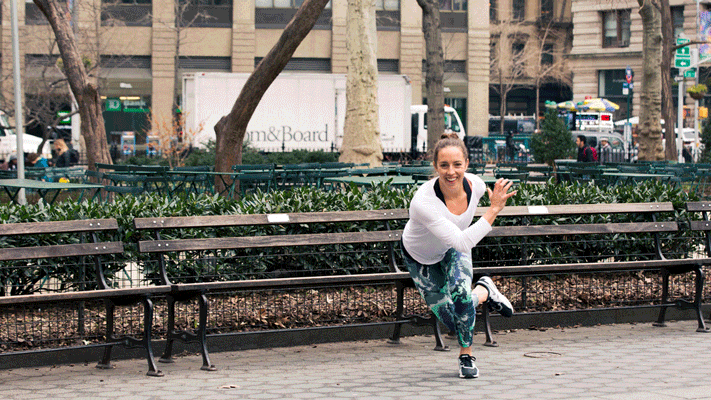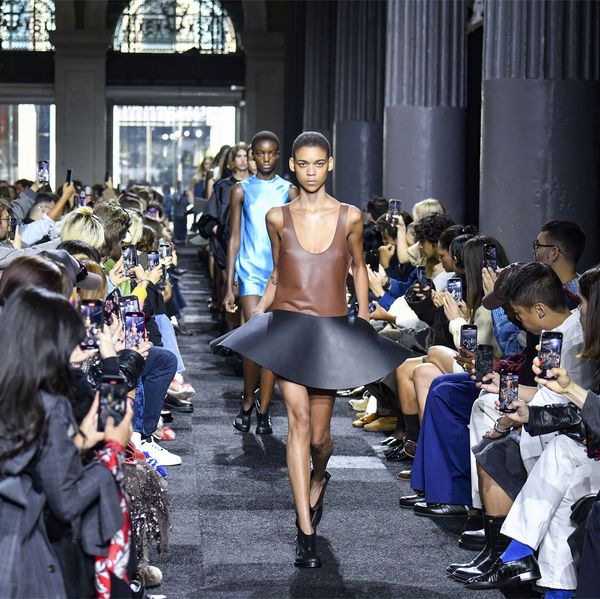Why Fitness Experts Recommend Changing Your Workout with the Seasons
Keep your fitness goals on track despite the cold weather.

Our lives are ruled by rhythms, whether seasonal, circadian, or otherwise. We sleep, eat, work, and play according to cycles—which raises the question, why don’t we work out that way, too? Shouldn’t we be basing our workouts on the seasons? In theory, this concept, which I shall hereby refer to as “seasonal fitness,” makes sense. After all, extreme temperatures affect the way our bodies function, so we should probably be moving them differently in the dead of winter than we do in the dog days of summer, right? This was a question I’ve been meaning to ask an expert for a long time (as a health and beauty writer, this is the kind of stuff that constitutes my coffee break musings). Now that the seasons are shifting, and short, cold, and dark days are ahead of us, it felt like the right time to investigate this topic, so I did.
I reached out to Dan Churchill, health and fitness coach and Centr celebrity trainer, and Quan Bailey, Isopure athlete and certified personal trainer, to answer my questions. While they agree that temperature can affect our bodies (and our workouts as a result), they say there’s not a simple yes-or-no answer to my question. “When it comes to temperatures, there are a couple of things to keep in mind,” Churchill tells me. “In cold systems, we encounter issues where the brain might tell us to do one thing, but our muscles won’t react as quickly.” This is because blood flow is naturally decreased, as it’s diverted to our core in order to protect core body temperature. To compensate for this, Churchill recommends warming up properly, ensuring you’re taking the time to ease your muscles into movement, thus preventing pain and injury. From this perspective, it’s not so much the workout that needs to change depending on the season, but the warm-up.
Bailey agrees. “I think, when working out outside in a colder climate, you should warm up a little bit more to where you feel loose,” he says. He notes that warming up can look different depending on who’s doing it and what workout they’re preparing for, so no matter how you’re warming up, make sure you put in the time until you reach a point where your body feels ready to take on your workout. If you’re listening to your body and warming up correctly, “you’ll be just fine, regardless of weather.”
Another thing to keep in mind when it comes to cold temperatures is that our bodies are more prone to dehydration. Churchill says dehydration can lead to injury, which is why his most important winter workout tip, then, is to “stay properly hydrated.” (On that note, check out four easy ways to drink more water, which will be especially helpful if you’re a coffee addict like me.)
Aside from focusing more of your time and energy on warming up and staying hydrated, there’s one other thing that Churchill recommends switching up workout-wise: Consider substituting long-duration workouts with something faster and more intermittent. “The type of workout should be more HIIT style and allow adequate rest if need be,” he says. Of course, if your body can withstand serious cold, then there are potential physiological benefits there, too. The general rule here is colder environment = shorter workout.
Obviously, working out in the freezing cold is as pleasant an experience as a balmy sunny day, so how do the experts recommend staying motivated this time of year? “Work with people or have a group of people that can hold you accountable and keep you going that way,” Bailey recommends. Churchill agrees. “I’d recommend joining a group and working out with a community, setting yourself a target or goal outside of just aesthetics (achieving a certain weight with your squat, running a certain distance, et cetera), and/or trying something new,” he says. “Social networks are seriously key. Join a new community, like Centr, to keep yourself motivated and encouraged!”
Want more stories like this?
All the Workout Gear Coveteur Staffers Are Using for Their At-Home Fitness Regimens
Amanda Kloots on Adapting Her Business and the Power of Fitness
Restorative Yoga Poses and Stretches You Can Do at Home




